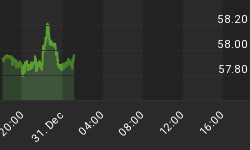Despite the market's recent behavior, it is our growing opinion that the chances of a double-dip are extremely low, and continuing to fall. This idea, as overly-optimistic as it may sound, is not without evidence. Just last week an article appeared in the Wall Street Journal stating that many corporations are beginning to spend money on capital investments (Lahart and Maher, Seeing Economic Rebound, Firms Step Up Spending).
However, this recent spending has - for the most part - not been financed by debt, but paid for in cash that companies have been hoarding since the 2008 financial crisis. In addition to investments in production, there has also been a small wave of corporate acquisitions as of late, serving as further evidence of confidence among business leaders.
Despite this recent increase in the flow of money around the US economy, broad money supply numbers have continued to slip at an alarming rate. We consider this to be mostly a flash in the pan, mostly because a great deal of this so-called 'deflation' is due to default rather than traditional deleveraging.
Our anticipation is that once company's gain additional confidence that they can benefit from investing in production and expansion, the corporate appetite for debt (and risk) will likely increase. Once that happens, money will begin flowing through our economy at a quickening pace, and deflation will cease to be a concern.
In fact, quite the contrary may occur. Given the amount of new money that has been created through government stimulus programs, there is a very real possibility that inflation may become a problem, once that new money starts making its way through the economy.
Examining at the market, it is apparent that investors have become extremely negative extremely quickly in last few weeks. In fact, last week we saw multiple 90% down days, during which more than 90% of all trading volume was down (for every 100 shares of stock traded, more than 90 were at a lower price than the previous trade). Unfortunately this is hardly unusual; it's typical of the investing public to overreact. In reality, the market is more likely close to a relative bottom rather than a top.
Stepping back to look at the market over a long-term, we can see that stocks remain trading within a range it entered in October of 2008 during the collapse. Those long-time readers may recall that this is precisely what we called for at the time.
In fact, during the fall of '08 we said that after their precipitous decline stocks would recover, and that once they peaked they would like stay within a trading range for an extended period of time. At the time we equated this to the period from about 1975 until roughly 1982, during which time a similar trading range existed. However, we do not expect the current trading range to exist for that long.
Our anticipation is partly due to the fact that we're now coming down to crunch time in the political world. It is our clear expectation that political profligates in Washington will likely lean on the Treasury and Fed to boost conditions of the US economy and financial market coming into election season.
After all, in mere months these grandstanders will need to be able to go back to their constituents and claim that all is well. At that time they need things to at least appear to have resumed some state of normalcy, at least in the eyes of the American public.
The last few years have been extremely volatile in the markets, and the situation today is hardly different. We live in a world of constant flux. Unfortunately, there is little that investors can do except get used to it. The fact is that there is now, always has been, and always will be a lot of uncertainty in the markets.
When it comes to the markets, there's no such thing as a free lunch; no golden key that will unlock the secrets of the world. That's why we spend countless hours of each and every day, week after passing week studying the markets and keeping up with its most minute developments. Hard work and perseverance are the only way to survive the maze of global markets.
















